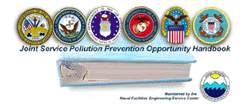| Overview: |
Balers are machines that compact and bind recyclable materials. A baler uses a hydraulic ram to compact material into a box shape. Compressed bales are then secured with wires. A baler can process paper, cardboard, corrugated boxes, tin or aluminum cans, plastics, or large metal components into dense stackable bales. The bales reduce space required for storage and transportation, and can be moved with a forklift. There is a wide range of sizes for balers. Recycling facilities from small military bases to high volume municipal waste recovery facilities use them to prepare recyclable materials for market. Some recyclables must be baled or a buyer will not accept them.
Balers may be fed by a gravity feeder, a mechanical conveyor, or an air feed system. If the operation calls for the use of the same baler to bale more than one material type, the baler must be specifically designed to handle different materials at different ranges of capacity. Tying bales with wire can be manual or automatic. The number, size, and tension of the baling wires must be adequate for the particular material baled. Throughput capacity for a typical baler is 20 tons per day. A baler produces no new waste streams.
The primary effect this technology has on pollution prevention is to increase the ease of handling, marketability, and value of the recycled commodity. It does not have a direct effect on the amount of materials recycled.
|
| Compliance Benefit: |
Balers prepare recyclables for market and therefore, help to meet the requirements under Executive Order 13101 requiring executive agencies (e.g. DOD) to incorporate waste prevention and recycling in their daily operations. A baler will increase electricity consumption. Under EO 12902, federal facilities are required to reduce energy consumption.
The compliance benefits listed here are only meant to be used as a general guideline and are not meant to be strictly interpreted. Actual compliance benefits will vary depending on the factors involved, e.g. the amount of workload involved.
|
| Materials Compatibility: |
No materials compatibility issues were identified.
|
| Safety and Health: |
Safety issues deal with the operation of power equipment. Operators should be trained to use the baler and exercise caution to keep limbs, clothing, and hair from being caught up in the hydraulic rams or feed hoppers. Machinery should not be used if workers are on medication. Consult your local industrial health specialist, your local health and safety personnel, and the appropriate MSDS prior to implementing this technology.
For work performed in California, Title 14 of CCR Section 17512 requires daily cleaning of equipment, including balers, at transfer and processing stations to prevent unsanitary conditions. Other states may have similar regulations.
|
| Benefits: |
- Enhanced marketability of commodity.
- Increased market value of commodity.
- Significantly reduces volumes of waste.
- Reduced transportation costs.
- Reduced storage space.
|
| Disadvantages: |
- Equipment may have high capital costs.
|
| Economic Analysis: |
Typical application: closed-end horizontal, manual tying baler with a capacity of less than 20 tons/day; capital costs range from $37,000 to $50,000; operating costs include labor (offset by labor savings from increased efficiency in material handling), electrical costs ($0.055 per kwhr), and minimal upkeep ($750 per year).
Alternate application: open-end horizontal, automatic tying baler with a capacity of more than 20 tons/day: capital costs range from $75,000 to $150,000; operating costs include labor (offset by labor savings from increased efficiency in material handling), electrical costs ($ 0.055 per kwhr), and minimal upkeep ($1,000 per year).
Assumptions:
- Baler used for existing cardboard recycling operation processing 40 tons per month.
- Market price of unbaled cardboard: $90/ton
- Market price of baled cardboard: $180/ton
- Electricity at $ 0.055/kwh; 25 hp motor and use of one hr./day.
- Baler cost: $40,000
- Maintenance: $750/yr.
- Minimal change in recycling quantities or labor requirements.
Annual Operating Cost Comparison for a Recycling Operation with a Baler and a Recycling Operation Alone
| |
Recycling Operation with a Baler
|
Recycling Operation Alone
|
| Operational Costs: |
|
|
| Electrical Costs: |
$270 |
$0 |
| Maintenance: |
$750 |
$0 |
| Total Operational Costs: |
$1,020 |
$0 |
| Total Recovered Income: |
$86,400 |
$43,200 |
| Net Annual Cost/Benefit: |
$85,380 |
$43,200 |
Economic Analysis Summary
Annual Savings for Baler: $42,180
Capital Cost for Diversion Equipment/Process: $40,000
Payback Period for Investment in Equipment/Process: < 1 year
Click Here to view an Active Spreadsheet for this Economic Analysis and Enter Your Own Values.
|
| Approving Authority: |
Approval is controlled locally and should be implemented only after engineering approval has been granted. Major claimant approval is not required.
|
